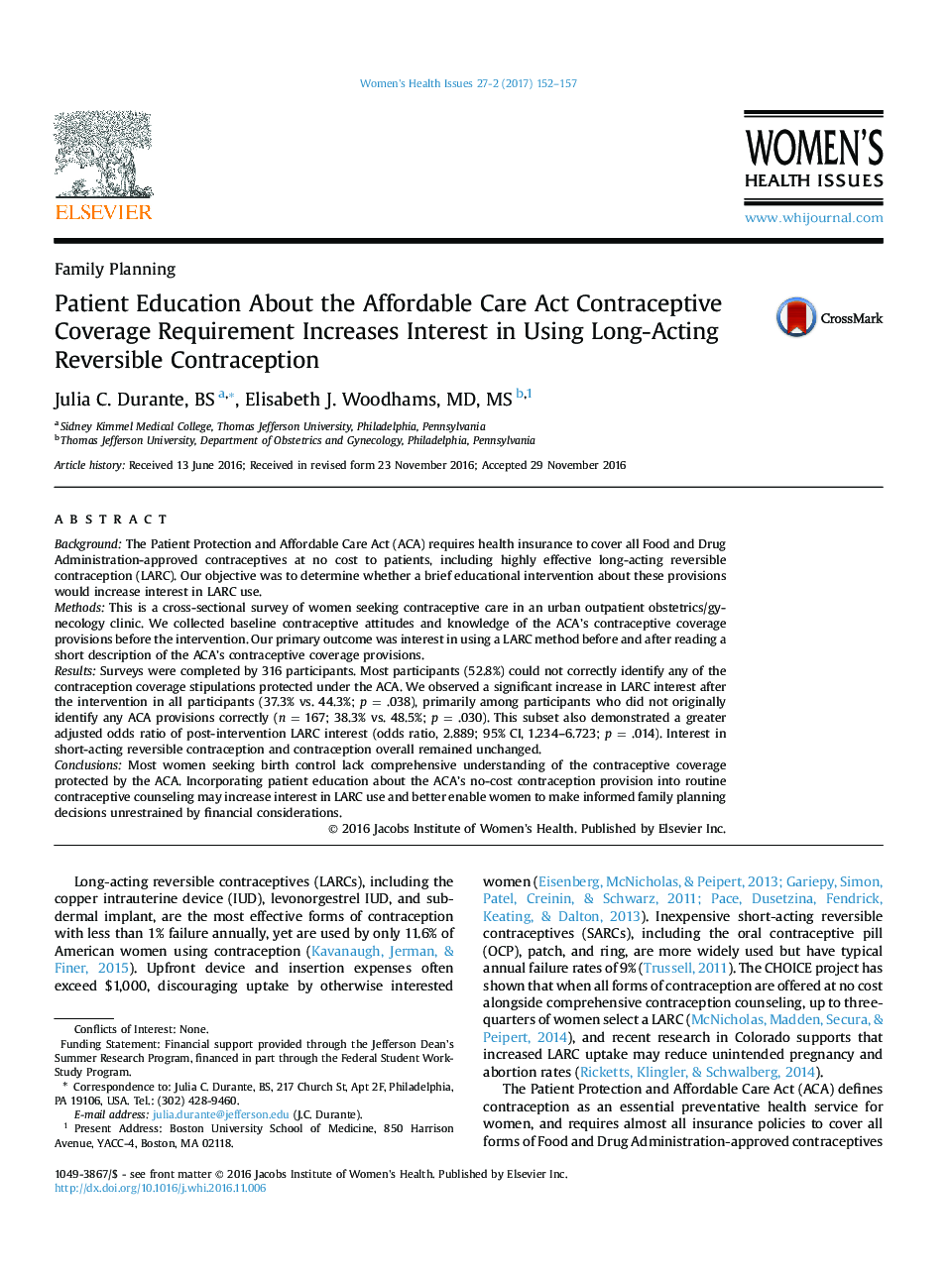| Article ID | Journal | Published Year | Pages | File Type |
|---|---|---|---|---|
| 5123445 | Women's Health Issues | 2017 | 6 Pages |
BackgroundThe Patient Protection and Affordable Care Act (ACA) requires health insurance to cover all Food and Drug Administration-approved contraceptives at no cost to patients, including highly effective long-acting reversible contraception (LARC). Our objective was to determine whether a brief educational intervention about these provisions would increase interest in LARC use.MethodsThis is a cross-sectional survey of women seeking contraceptive care in an urban outpatient obstetrics/gynecology clinic. We collected baseline contraceptive attitudes and knowledge of the ACA's contraceptive coverage provisions before the intervention. Our primary outcome was interest in using a LARC method before and after reading a short description of the ACA's contraceptive coverage provisions.ResultsSurveys were completed by 316 participants. Most participants (52.8%) could not correctly identify any of the contraception coverage stipulations protected under the ACA. We observed a significant increase in LARC interest after the intervention in all participants (37.3% vs. 44.3%; p = .038), primarily among participants who did not originally identify any ACA provisions correctly (n = 167; 38.3% vs. 48.5%; p = .030). This subset also demonstrated a greater adjusted odds ratio of post-intervention LARC interest (odds ratio, 2.889; 95% CI, 1.234-6.723; p = .014). Interest in short-acting reversible contraception and contraception overall remained unchanged.ConclusionsMost women seeking birth control lack comprehensive understanding of the contraceptive coverage protected by the ACA. Incorporating patient education about the ACA's no-cost contraception provision into routine contraceptive counseling may increase interest in LARC use and better enable women to make informed family planning decisions unrestrained by financial considerations.
